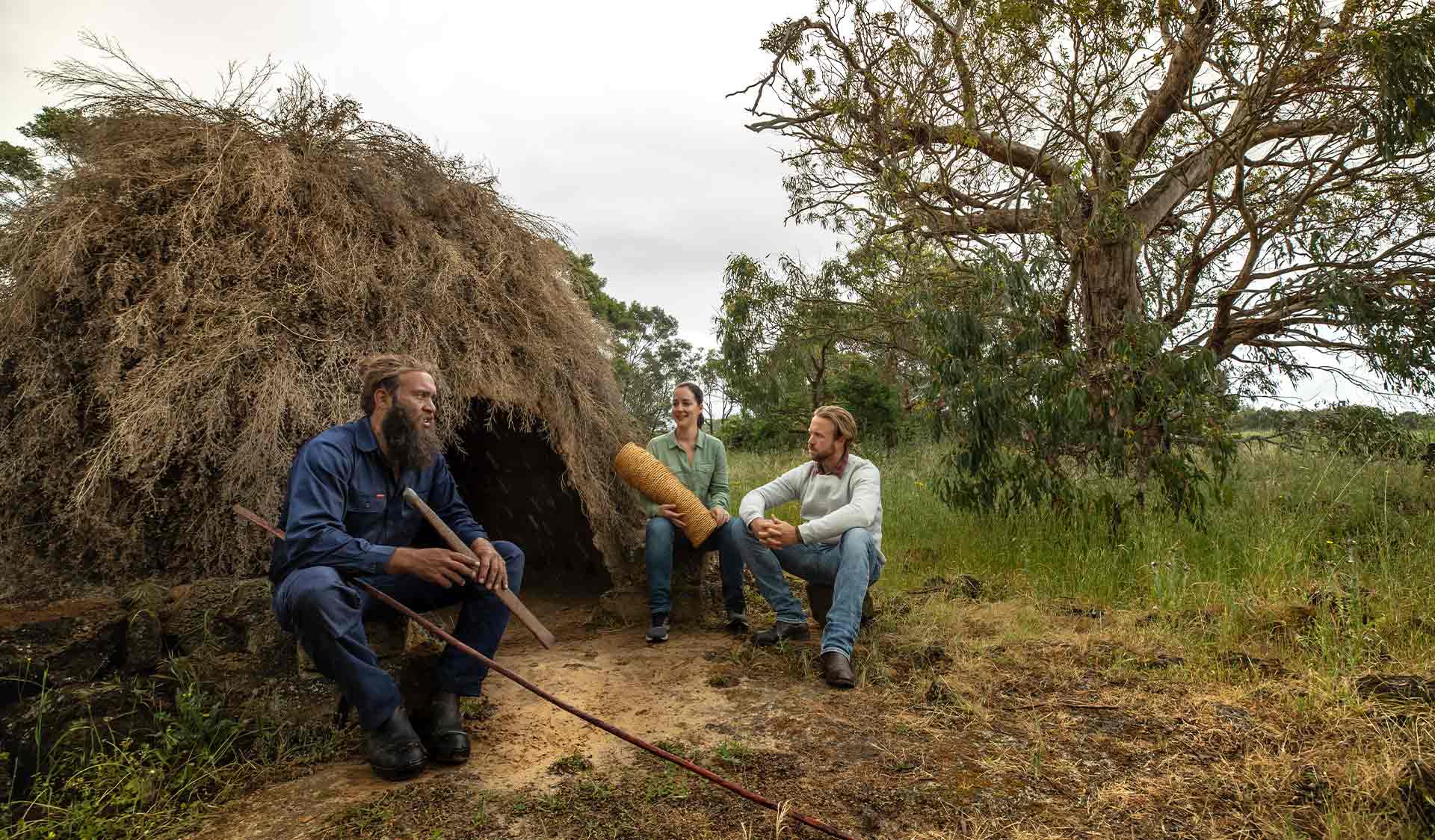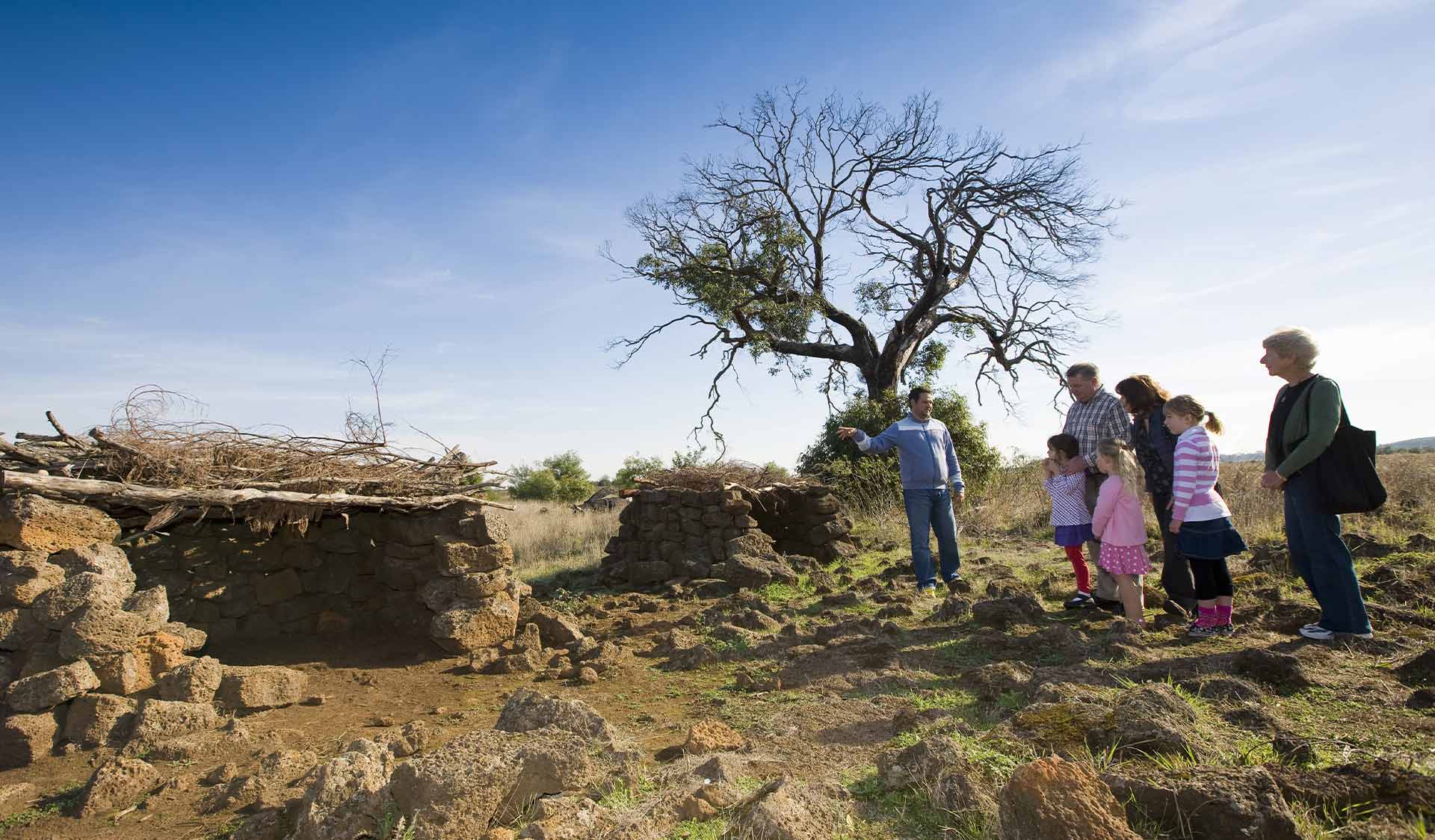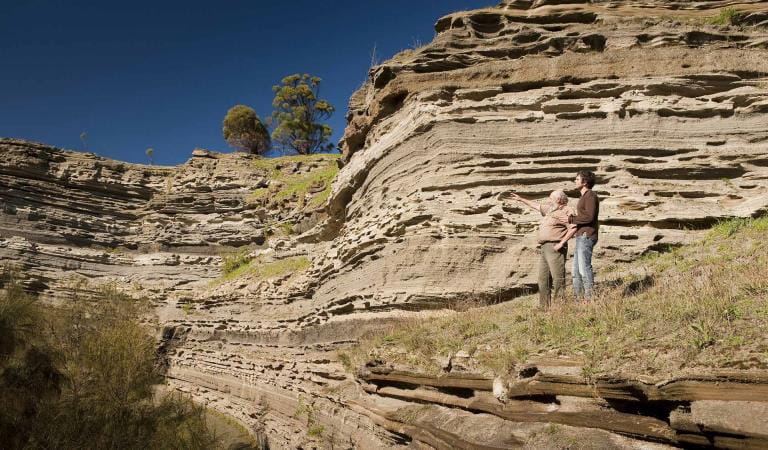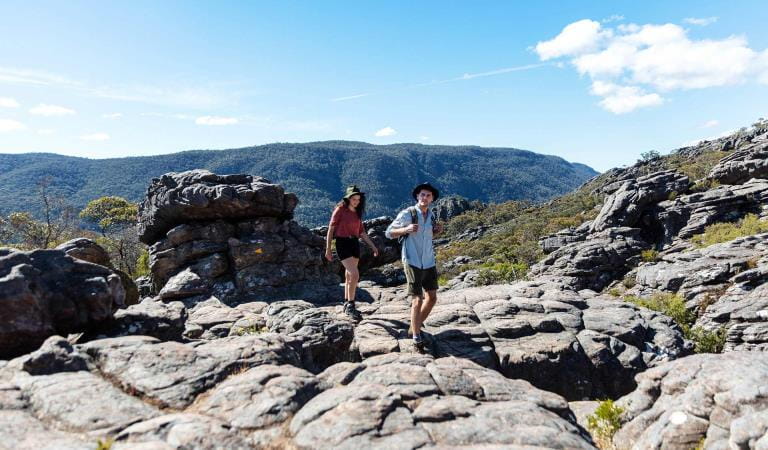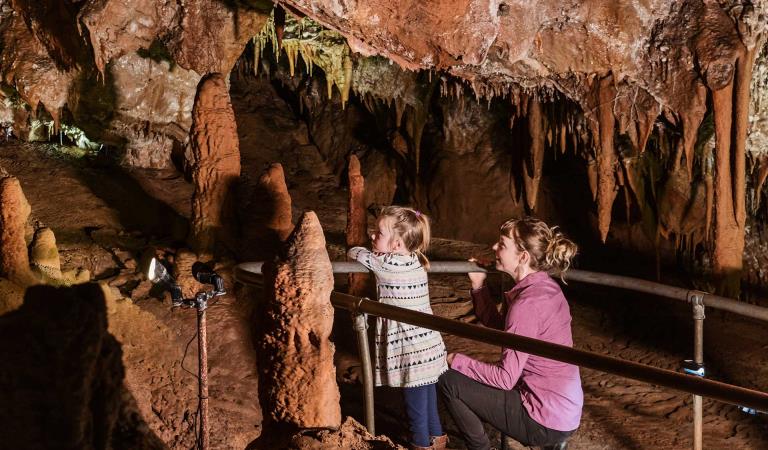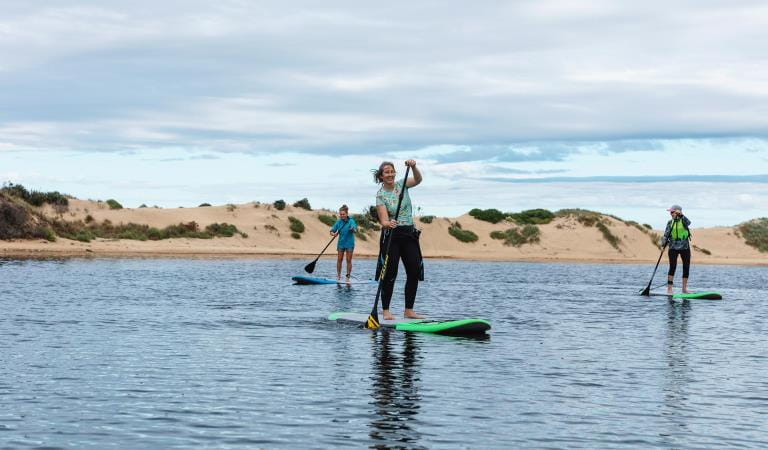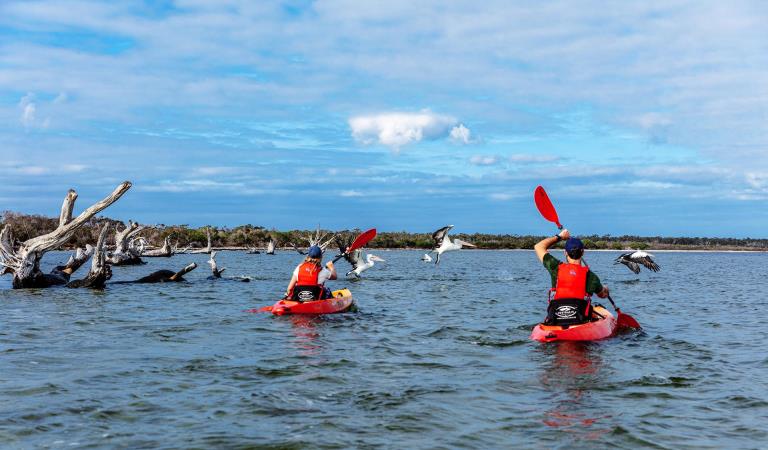In July 2019, the Budj Bim Cultural Landscape was inscribed on the UNESCO world heritage list, which recognises the international significance of the landscape and the aquaculture systems.
Set amid rugged stone country, woodlands, wetlands and lakes, Budj Bim Cultural Landscape is the first place in Australia to receive international recognition solely for its Aboriginal cultural values.
Located in the heart of Gunditjmara Country in south-western Victoria, the Budj Bim Cultural Landscape contains one of the world’s most extensive and oldest aquaculture systems. At least 6,600 years ago Gunditjmara first constructed these extensive, sophisticated aquaculture systems along the Budj Bim lava flow, and many of these systems are still in use today. Gunditjmara knowledge and practices have endured and continue to be passed down through their Elders and are recognisable across the wetlands of the Budj Bim Cultural Landscape.
The Budj Bim Cultural Landscape consists of three locations; Tae Rak (Lake Condah), Kurtonitj and the Tyrendarra, all of which are declared Indigenous Protected Areas (IPAs). The new listing includes most of Budj Bim National Park.
The Gunditjmara people engineered the ingenious system to trap, store and harvest kooyang - short-finned eel. Weirs, holding and growing ponds, and stone channels, some of which are hundreds of metres long, were dug out of basalt lava flow from the now dormant Budj Bim volcano.
The Gunditjmara people crafted long eel baskets, made of river reeds and spear grass to regulate and trap the eels according to weight and size. Baskets were also used to carry the eels, which fed and sustained the lives of Gunditjmara for many generations. These engineered wetlands provided the economic basis to sustain large groups of people living in villages of stone huts along the lava flow and allowed them to undertake trade.
The Budj Bim system clearly demonstrates that Gunditjmara people have actively managed the productivity of the environment and natural resources for many thousands of years. This evidence over time has contributed to an alternative and more complex view of Aboriginal economy and lifestyle.
Budj Bim is now Australia’s 20th property on the UNESCO World Heritage List and the second for Victoria, alongside the Royal Exhibition Building and Carlton Gardens. We are proud that Budj Bim National Park (formerly Mount Eccles) is Victoria’s first co-managed national park. We work closely with Gunditjmara Traditional Owners, Budj Bim Council and Department of Energy, Environment and Climate Action (DEECA) to manage and protect the landscape.
The Gunditjmara have been running Budj Bim Tours since 1999 – the guided experience unlocks the landscape and allows visitors to experience a culture that is more than 60,000 years old. For more information on tours visit: Budj Bim Cultural Landscape Tourism - tours operate Wednesday ~ Sunday Budj Bim Tours
Located 1hr 15min drive from Warrnambool, discover the rich cultural history of Budj Bim National Park, it’s native wildlife and unique volcanic landscape.
Other similar parks
So many of our parks have a rich history of Aboriginal Cultural Heritage. Below are more examples of parks that are jointly managed with traditional owners.
Tower Hill Wildlife Reserve
Grampians National Park
Buchan Caves Reserve
Cape Conran Coastal Park
Gippsland Lakes Coastal Park
How to get there
UNESCO World Heritage Listing for Budj Bim Cultural Landscape
Facilities
Change of Conditions
Nature being nature, sometimes conditions can change at short notice. It’s a good idea to check this page ahead of your visit for any updates.
-
Crater Rim Walk (Budj Bim National Park)
Lake Surprise Lookout Temporary Closure
Lake Surprise Lookout in Budj Bim National Park is temporarily closed due to unsafe conditions. Work is underway to assess requirements to make the lookout safe for visitor use. Timeframe for reopening is unknown. Visitors are requested not to access the lookout until further notice. The Crater Rim Walk is open, including three other lookouts that offer views of Lake Surprise.



